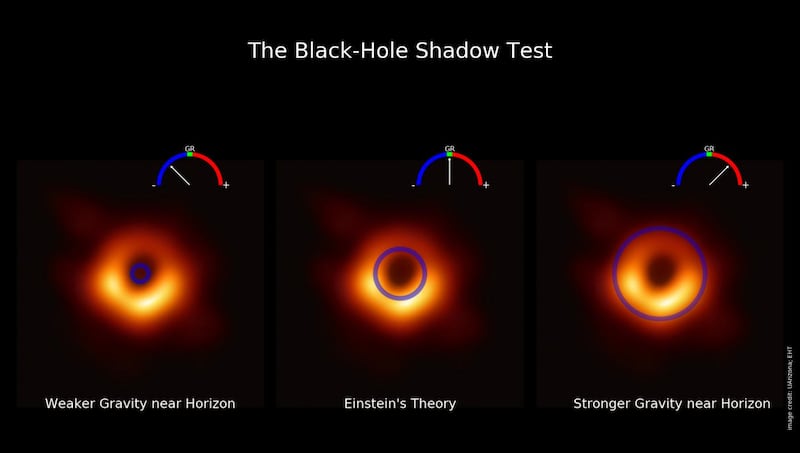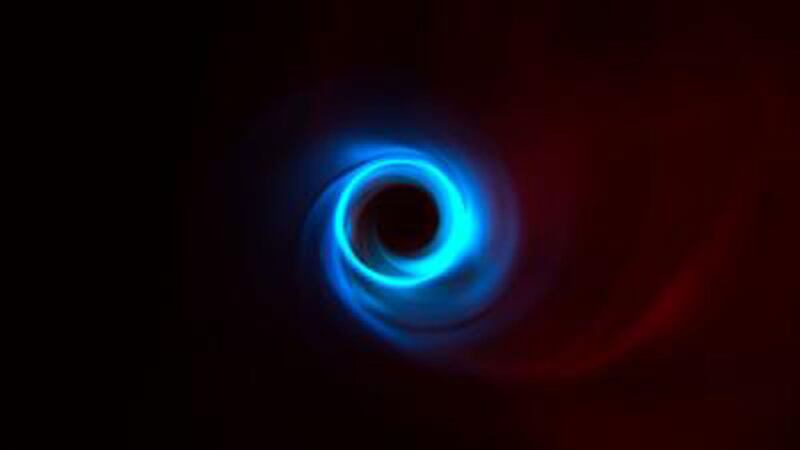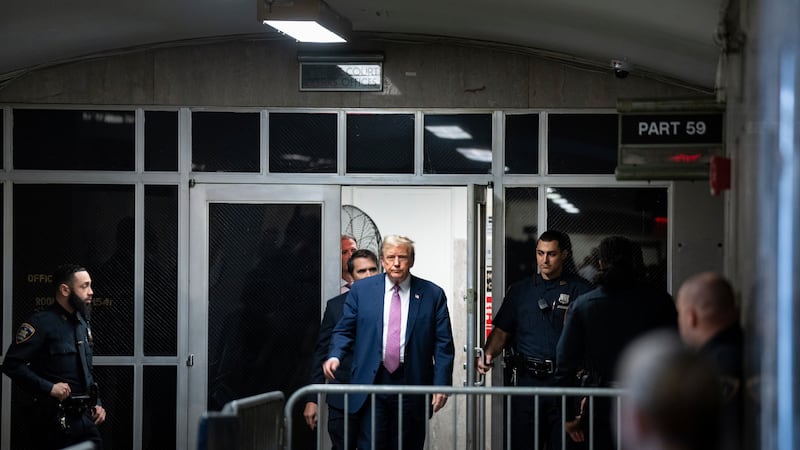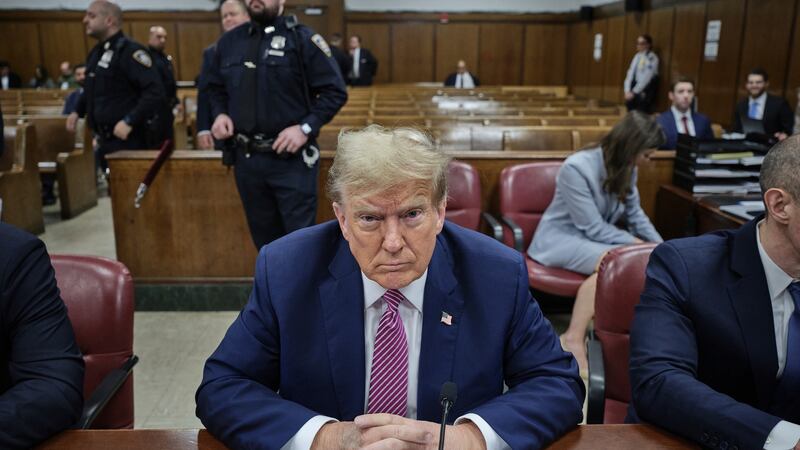A “shadow” cast by a supermassive black hole appears to have proved Albert Einstein right once again, according to astrophysicists.
Researchers have analysed the first ever image taken of the enormous space object at the centre of a nearby galaxy, known as M87.
They say that the so-called shadow cast by this supermassive black hole proves Einstein’s theory of relativity – the idea that gravity is matter warping spacetime.
A team of astrophysicists from the global Event Horizon Telescope collaboration studied the image of the monstrous gravitational vortex with about 6.5 billion times more mass than the Sun.
They found the intense gravity of the black hole bent spacetime, thereby “acting as a magnifying glass and causing the black hole shadow to appear larger”.
By measuring this distortion, the researchers said they found the size of the black hole shadow was consistent with the size predicted by the mathematics of general relativity.

Lia Medeiros, of the Institute for Advanced Study (IAS) in New Jersey, US, said: “This is really just the beginning.
“We have now shown that it is possible to use an image of a black hole to test the theory of gravity.”
Shadows cast by black holes are unique because they are unlike those seen in everyday life.
A physical object, for example, casts a shadow by preventing light from passing through it.
But a black hole, on the other hand, creates this dark emptiness, or the effect of a shadow, by sucking light towards itself.
Scientists say this is the first time a test of gravity has been successfully performed at the edge of a supermassive black hole, although these kind of gravitational tests have been undertaken in other cosmic settings.
The first evidence of Einstein’s general relativity was observed in 1919, which was based on the displacement of starlight, travelling along the curvature of spacetime caused by the sun’s gravity.
More recent examples include the detection of gravitational waves at the Laser Interferometer Gravitational-Wave Observatory, which pass through the fabric of spacetime “like ripples on a pond”.
Michael Kramer, director of the Max Planck Institute for Radio Astronomy in Germany, said: “Black hole images provide a completely new angle for testing Einstein’s theory of general relativity.”
Astrophysics professor Dimitrios Psaltis, of the University of Arizona, US, added: “Together with gravitational wave observations, this marks the beginning of a new era in black hole astrophysics.”
The findings are published in the journal Physical Review Letters.








